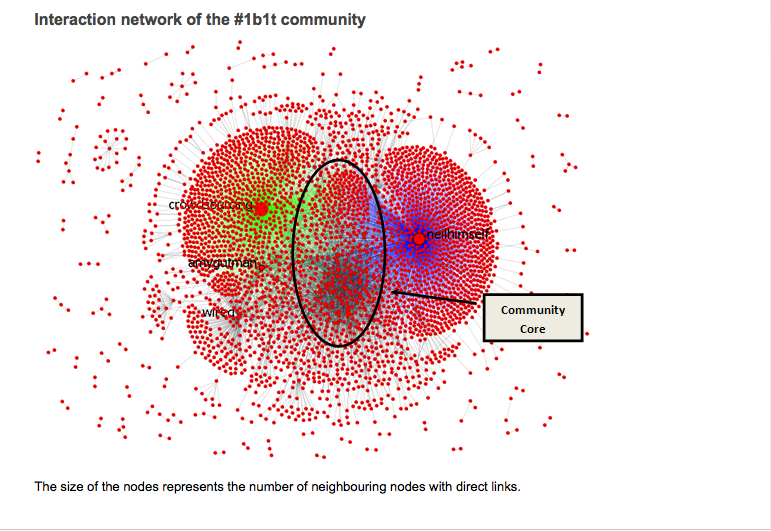9.9. Twitter Example¶
Through its API, Twitter makes all its messaage publicly available — for free with a variety of restrictions, and with many fewer restrictions to paid subscribers. This makes Twitter a nearly ideal medium for social network studies.
Twitter, founded in 2006, is a social networking and microblogging service for exchanging short messages (140 characters long) that are known as “tweets”. According to a recent report, there are currently about 200 million users on Twitter. The website is especially popular in countries such as the United States, Brazil, the United Kingdom, Japan, and Canada. Unlike other social networking sites, such as Facebook, Twitter promotes asymmetric-type relationships in which connections between Twitter users usually are not reciprocal. In other words, if one user follows another user on Twitter, the second user does not have to follow the first user back. This often leads to the creation of power users who have many more followers than the number of people they follow back; power is thus put in the hands of a few influential users. However, at the same time, the asymmetric nature of Twitter also helps to interlink different online communities and facilitate the flow of information and support between these communities that otherwise would be disconnected.
The subject of the particular study just quoted was an online Book Club, the One Book, One Twitter book club (#1b1t), founded by Jeff Howe (who coined the term “crowdsourcing”), and in particular the discussion of one book, American Gods, by Neil Gaiman.
Classified as science fiction or fantasy, American Gods was one book on a list of ten selections. Six titles were nominated by Tweeter-readers: American Gods, Fahrenheit 451, 1984, Brave New World, Slaughterhouse Five, and Catch 22. The “1b1t advisory board” selected four others—100 Years of Solitude by Gabriel Garcia Marquez, Catcher in the Rye by J.D. Salinger, God of Small Things by Arundhati Roy, and Toni Morrison’s Song of Solomon.
One of the members of the #1bt1t book club discussing the work was its author, Neil Gaiman. Another was the club founder Jeff Howe, an internet star in his own right independently of the club. A network containing Mention links was constructed. If a Tweet from x mentioned y, x and y are added to the graph, if necessary, and a mention link was added to the graph between them.
The result of this procedure was an interaction network consisting of 3,361 club members and 6,314 connections among them (see figure … below). Since this network represents who talks to whom in the book club, only people who mentioned (or were mentioned by) at least one other club member are included in the network. … The position of each node in this network visualization is based on a popular “force-directed” algorithm that attempts to display the network with the least number of crossing connections.

The book club network¶
One interesting observation is that there are two distinct clusters of users in this network—one that is centered around Jeff Howe (@crowdsourcing) and another around Neil Gaiman (@neilhimself). This demonstrates that both Jeff Howe and Neil Gaiman, who are influential Twitter users, bring their own group of followers into the conversation of this club. This also reconfirms the positive impact on the book club of having an author with a strong Twitter following who is also joining in the conversation himself.
It is not surprising that Jeff Howe, club founder and internet star, is a network center. He is also the most active tweeter in the group (215 messages, well ahead of the member in second place at 152 tweets). It is also interesting that although the author is a network center, he is not to be found among the club’s 10 most active tweeters. This illustrates a common feature of Twitter; importance does not always correlate with message volume.
